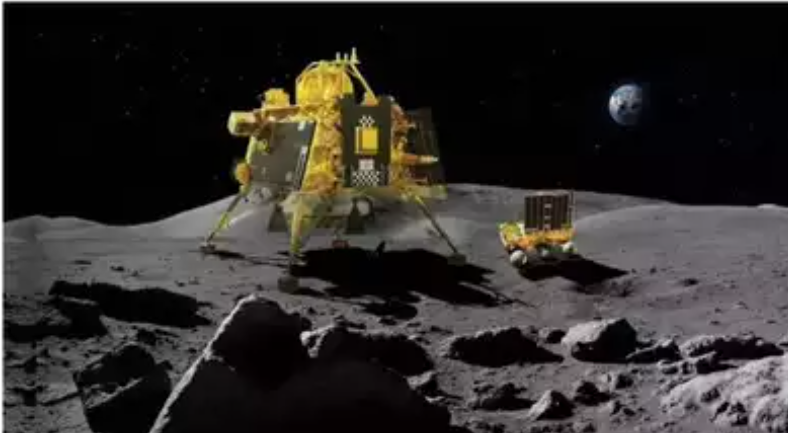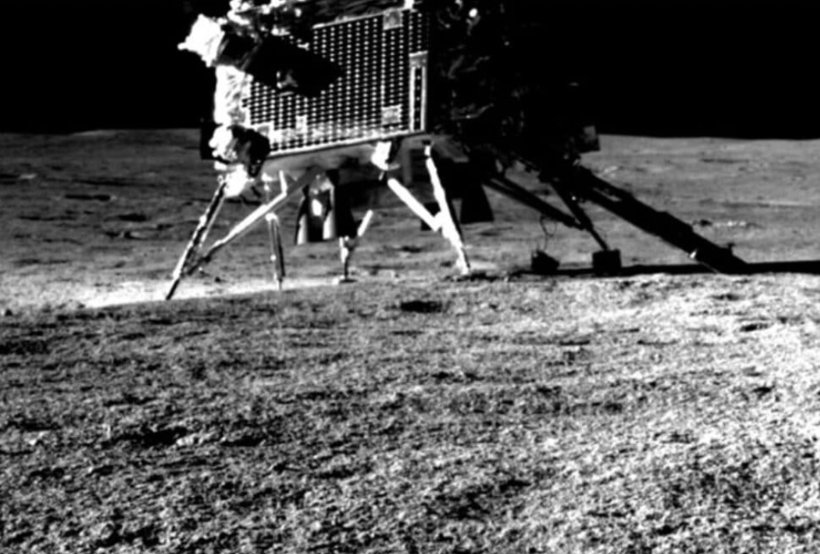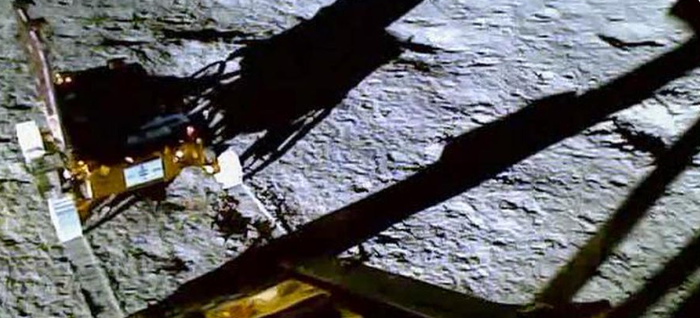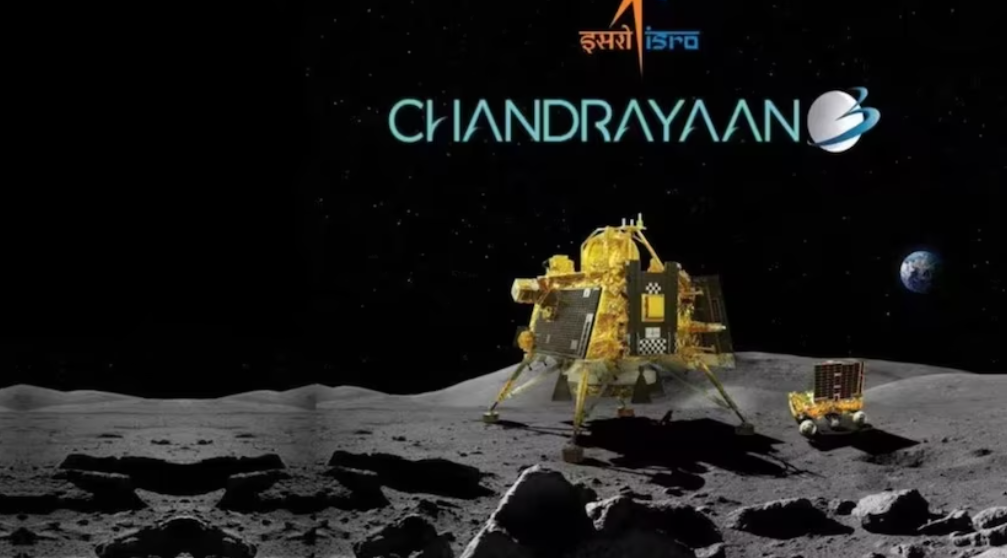Chandrayaan’s Pragyan Rover Uncovers Evidence of Magma Ocean on Young Moon:-
India’s Chandrayaan-3 mission, a testament to the country’s advancements in space exploration, has yielded groundbreaking discoveries about the Moon’s early history. The Pragyan rover, a key component of this mission, has provided compelling evidence suggesting the presence of a magma ocean on the young Moon. This discovery not only enhances our understanding of lunar geology but also offers insights into the early stages of planetary formation in our solar system.
The Chandrayaan-3 Mission: A Brief Overview
Launched by the Indian Space Research Organisation (ISRO), Chandrayaan-3 is the latest mission in India’s lunar exploration program. It follows the Chandrayaan-1 mission, which made significant discoveries including the presence of water molecules on the Moon’s surface. Chandrayaan-3’s primary goal was to achieve a successful soft landing on the Moon’s surface and deploy its lander and rover to conduct scientific experiments.
The mission’s lander, Vikram, successfully touched down near the lunar South Pole on August 23, 2024. The Pragyan rover, which was deployed from the lander, has been conducting surface operations and transmitting data back to Earth. The rover’s instruments have been designed to analyze the lunar soil, study the surface composition, and explore the geological features of the landing site.  for more information click on this link
for more information click on this link
Discovery of the Magma Ocean
One of the most remarkable findings from the Pragyan rover is evidence suggesting that the Moon experienced a primordial magma ocean. This discovery is based on the analysis of lunar rock samples and surface data collected by the rover’s onboard instruments.
Understanding the Magma Ocean Hypothesis
The magma ocean hypothesis posits that, shortly after the Moon’s formation, it was covered by a molten layer of rock. This molten state is believed to have resulted from the immense heat generated by the Moon’s formation and subsequent impacts. As the magma ocean began to cool and solidify, it eventually formed the Moon’s crust, which was subsequently modified by volcanic and impact events.
The evidence supporting the magma ocean theory includes the presence of specific minerals and rock formations that are consistent with crystallization from a molten state. The Pragyan rover’s instruments, including a spectrometer and a drill, have detected these minerals in the lunar soil, providing key insights into the Moon’s early thermal history.
Key Findings from the Pragyan Rover
- Mineralogical Evidence: The rover’s spectrometer has identified minerals such as olivine and pyroxene, which are commonly associated with high-temperature magmatic processes. These minerals suggest that the Moon’s surface materials were once part of a molten layer.
- Isotopic Analysis: The rover has conducted isotopic analyses of lunar rocks and soil, revealing compositions that align with predictions for rocks formed from a cooling magma ocean. The isotopic ratios provide clues about the thermal conditions present during the Moon’s early history.
 for more information click on this link
for more information click on this link - Surface Features: The rover has observed surface features that are consistent with crystallization patterns from a molten state. These features include certain types of rock formations and textures that indicate the presence of a primordial magma ocean.
- Seismic Data: Although the rover itself does not have seismic instruments, data from earlier missions and seismic readings from lunar landers have supported the presence of a magma ocean. These readings indicate variations in the Moon’s crust that align with the cooling and solidification of a molten layer.
Implications of the Discovery
The discovery of evidence for a magma ocean on the young Moon has several significant implications for our understanding of lunar and planetary geology:
1. Insights into Early Lunar History
The findings offer a window into the Moon’s formative years, helping scientists piece together the sequence of events that led to its current geological state. Understanding the Moon’s early magma ocean provides context for its subsequent volcanic activity, crust formation, and impact cratering.
2. Comparative Planetology
The magma ocean hypothesis is not limited to the Moon; it also applies to other planetary bodies in the solar system. By studying the Moon’s magma ocean, scientists can draw comparisons with similar processes on Earth and other planets, such as Mars and Mercury. This comparative approach helps refine models of planetary formation and differentiation.  for more information click on this link
for more information click on this link
3. Lunar Resource Exploration
The information gleaned from the magma ocean discovery may also have implications for future lunar exploration and resource utilization. Understanding the Moon’s early thermal history can guide the search for valuable resources and inform strategies for mining and utilizing lunar materials.
4. Evolution of Lunar Volcanism
The discovery contributes to the broader understanding of lunar volcanism and the Moon’s geological evolution. By studying the remnants of the magma ocean, scientists can better understand the nature of volcanic activity on the Moon and its impact on the lunar surface.
Challenges and Future Research
While the discovery of evidence for a magma ocean is a significant milestone, it also presents challenges and questions for future research. Continued analysis of the data collected by the Pragyan rover, as well as future lunar missions, will be crucial in refining our understanding of the Moon’s early history.
1. Data Validation and Interpretation
Ongoing analysis of the rover’s data is essential for validating the evidence and interpreting the findings accurately. Scientists will need to corroborate the results with data from other missions and models to build a comprehensive understanding of the Moon’s magma ocean.
2. Long-Term Impact Studies
Long-term studies of the Moon’s surface and subsurface will provide additional insights into the cooling and solidification processes of the magma ocean. Future missions may deploy specialized instruments to further investigate these processes and their effects on lunar geology.  for more information click on this link
for more information click on this link
3. Comparative Studies with Other Celestial Bodies
To fully understand the implications of the magma ocean discovery, scientists will need to conduct comparative studies with other planetary bodies that may have experienced similar processes. This research will help refine models of planetary formation and evolution.
Conclusion
The Chandrayaan-3 mission’s Pragyan rover has made a landmark discovery by providing evidence of a magma ocean on the young Moon. This finding enhances our understanding of lunar geology and offers valuable insights into the early stages of planetary formation. As scientists continue to analyze the data and conduct further research, the implications of this discovery will extend beyond the Moon, influencing our knowledge of planetary science across the solar system.
The ongoing exploration of the Moon and other celestial bodies promises to uncover even more about the origins and evolution of our planetary neighbors. The Pragyan rover’s contribution to this scientific endeavor underscores the importance of continued space exploration and the quest to unravel the mysteries of our cosmic surroundings. ALSO READ:- ‘The Rings of Power’ Interview: Sam Hazeldine on Playing Adar, Learning Black Speech, and the Sauron Problem 2024




